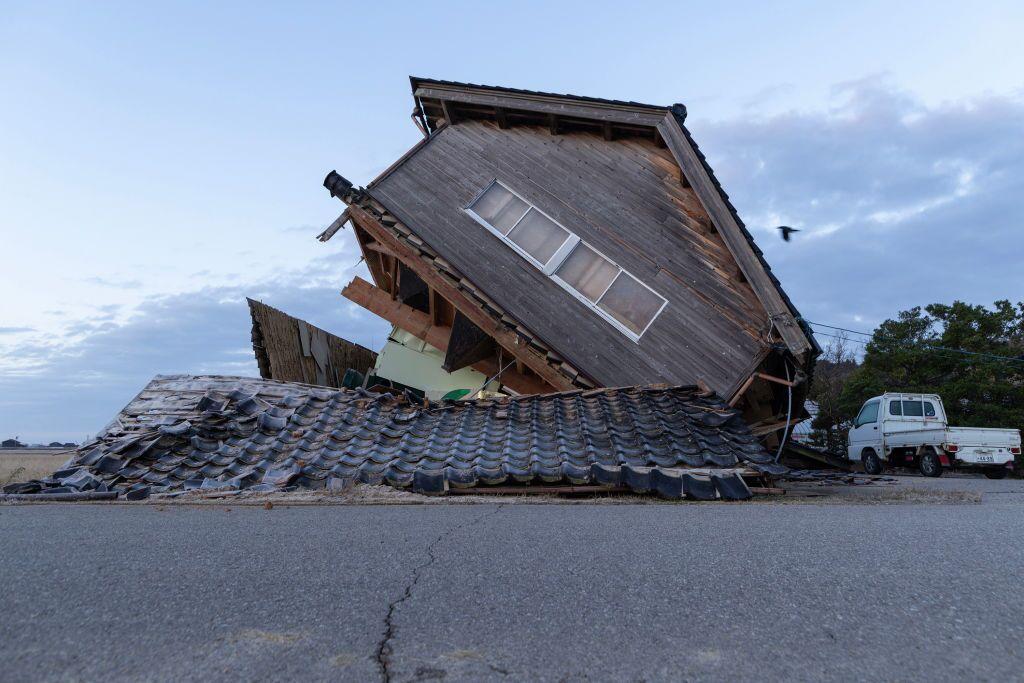[ad_1]
For a long moment, Japan feared the worst.
After the magnitude 7.6 earthquake that struck on New Year’s Day, authorities announced the most serious tsunami alert issued since the 2011 disaster that devastated the Tohoku region. Waves of up to five meters (16 feet) were feared. The temblor caused tremors on the highest level on Japan’s Shindo shaking scale for only the seventh time on record. A major calamity felt imminent.
The Noto region has indeed experienced a devastating blow. At the time of writing, nearly 50 are confirmed dead; more will follow as authorities reach houses that have been flattened or burned. But the greatest fears in the immediate aftermath haven’t yet been realized — though, with both 2011 and the 2016 Kumamoto quakes having been preceded by strong foreshocks, further catastrophe could strike.
Many I spoke to were surprised by the level of urgency in the warnings given just after the quake hit. An announcer on Japan’s public broadcaster NHK, in a tone of practiced panic, implored viewers to “Stop looking at the TV and run, now!” while graphics warned, in both Japanese and English, in the simplest terms: “HUGE TSUNAMI! EVACUATE!”
The response was warranted: After 2011, authorities and TV networks were criticized for not being urgent enough, lulling some into a false sense of security, only to be swallowed by the ensuing tsunami. Doubtless more deaths will be counted in Japan in the coming days; among them, the crew of the Coast Guard aircraft involved in the collision at Tokyo’s Haneda airport, which struck a Japan Airlines Co. flight carrying nearly 400. The smaller craft was preparing to ferry aid to the disaster zone.
But in many ways, the story of this disaster is one of what didn’t happen. Despite the record-level shaking, most buildings held up, with much of the damage so far coming in older dwellings, or those hit by fire or landslides. Nuclear plants located close to the most severe shocks were unaffected. In perhaps the most telling example, not only were trains not derailed, but the Shinkansen bullet train that runs just 100 kilometers from the epicenter was back in full operation less than 24 hours after the event occurred.
Consider that the quake in Syria and Turkey almost one year ago, which had a similar magnitude of around 7.8, killed some 60,000 and caused tens of billions of dollars of damage. September’s temblor in Morocco killed nearly 3,000; another of just magnitude 5.9 in China’s Gansu province had 150 fatalities.
There are types of disasters we are helpless against. We can do nothing about the pyroclastic flow of a volcano, nor the environmental effects as it shoots smoke and ash into the atmosphere. Hurricane forecasting has advanced hugely, but while we can evacuate in advance of a storm, our ability to prevent devastating economic damage remains limited, as seen with Hurricane Ian in 2022.
But there’s little excuse for developed nations to fail to erect now-proven systems and codes that can save lives. Earthquakes are a prime example. That so few deaths happened even in areas with the most severe shaking ever felt isn’t down to luck.
One widely circulated sight of the quake was that of a seven-story building that fell on its side in Wajima. That structure was built in 1972, a decade before an overhaul of Japan’s national building standards — one of many changes to the construction code that has been made since World War II, as the nation learned how to adapt to its frequent disasters. Those same standards are one reason I continue to be gung-ho on Japan’s unsentimental approach to razing old buildings and putting better ones in their place. Tsunami defenses also held up; critics love to blast Japan’s fondness for solving problems with concrete, but supposedly scenery-spoiling tetrapods and seawalls show their worth at times like this.
Nonetheless, the message here isn’t that the country is invulnerable. A magnitude 7.6 earthquake sounds (and is) big. But the scale is logarithmic, meaning the magnitude 9 temblor that struck in 2011 released more than 125 times the energy as the New Year’s quake. It’s not possible to build seawalls to prevent all the damage from such a tsunami; instead, we must learn from the past, and build away from these coasts over time.
That Japan wasn’t hit harder on New Year’s Day isn’t serendipitous. Nevertheless, it’s almost inevitable that it will suffer a more severe blow, and soon. A long-expected repeat of the 1923 quake that struck directly beneath Tokyo in 1923 could cause as many as 23,000 deaths from collapsed buildings and fires, according to government estimates. The country is racing to replace the stock of pre-1981 buildings, but even that won’t eliminate the risk of fire.
The even greater specter is that of a quake hitting the Nankai Trough fault line, which runs along most of Japan’s Pacific coast. The government expects devastating tsunamis from such an event could kill as many as 320,000 people, more than an order of magnitude above the toll in 2011, and result in some 220 trillion yen ($1.5 trillion) of damage.
Disclaimer: This is a Bloomberg Opinion piece, and these are the personal opinions of the writer. They do not reflect the views of www.business-standard.com or the Business Standard newspaper
First Published: Jan 03 2024 | 8:15 AM IST
[ad_2]

